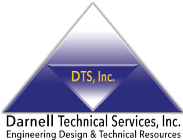The term “tilt-up” was coined in the 1940’s to refer to a construction method that is quick and cost-effective and eliminates the formwork that is necessary for pour-in-place concrete walls.
An Apt Term
As you will see, the name is quite apt, since this construction method entails casting slabs of concrete horizontally on the construction site and then lifting, or tilting them, with a crane to form the exterior walls of a building.
Once erected, the panels are connected, and the roof structure is attached to the walls. Then the joints are caulked and the exterior finish is applied
This method is sometimes called “tilt-wall” or, in more technical documents, “site-cast precast concrete walls”. But Tilt-up is the most common and almost universally accepted term.
A Brief History of Tilt-Ups
Although the idea of using precast concrete panels in construction had been in the air for a while, it was only after World War II that tilt-ups became a reality. It was then that three technological advances converged to make this method possible: The truck crane, electric-arc welding, and ready-mixed concrete.
Tilt-up construction was first used for large, simple structures, such as warehouses. However, its applications have expanded to include office buildings, schools, industrial projects, retail structures, and more.
Benefits of Tilt-Up Construction
Tilt-up structures offer many attractive benefits, compared to competing methods:
- Swiftness. The times that elapses from starting to build the panels until the building shell is completed is typically four to five weeks. This also translates into labor-cost savings.
- Lower construction costs. Tilt-ups are more cost-effective than other construction methods, particularly in areas where tilt-up expertise is available.
- Versatile. As we have mentioned above, tilt-ups can be used to build a wide range of structures. Aesthetically, the only limit is the imagination of the designers.
- Reduced maintenance costs. Since concrete is extremely resilient, the only necessary maintenance is usually a coat of paint every six to eight years.
- Fire resistant: Concrete also offers excellent fire-resistance values.
At Darnell Technical Services we have the engineering design and project management expertise to always deliver optimal result. Contact us today by telephone (714-285-0082, 702-945-2899) or through our social media accounts on Facebook, Twitter and LinkedIn and learn more about all the technical instruments and materials we put at your disposal.








